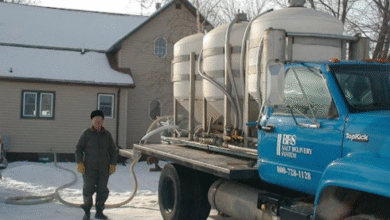
PFAS in the Water: What Tennesseans Need to Know About These “Forever Chemicals”
There’s something unsettling about the idea of drinking water that’s not truly clean. Not because it looks murky or smells funny, but because it seems fine—until you learn what’s actually in it. That’s the case with PFAS, a group of man-made chemicals that have slowly crept into our environment, our bodies, and yes—our water.
They’re called “forever chemicals” for a reason. PFAS (short for per- and polyfluoroalkyl substances) don’t break down. Not in nature. Not in your body. Not over time. Once they’re in, they tend to stick around—quietly, invisibly, and potentially doing harm.
And for folks living in the Volunteer State, the question isn’t just what are these chemicals?—it’s what’s the deal with PFAS in Tennessee’s water supply?
Let’s dig into the answers—without fearmongering, without sugarcoating. Just clear, grounded facts that matter.
First off: What Are PFAS, and Why Should You Care?
Imagine a chemical that repels grease, water, and stains. Sounds helpful, right? That’s why PFAS have been used since the 1940s in everything from nonstick pans and food wrappers to firefighting foam and waterproof jackets.
The problem? These chemicals don’t go away. Once they’re used, they seep into the ground, drift through the air, or get rinsed down drains—eventually ending up in rivers, lakes, and yes, our drinking water.
And studies suggest they’re not exactly benign. While research is still ongoing, some PFAS compounds have been linked to serious health issues: hormone disruption, immune system problems, certain cancers, and developmental delays in children.
They’re not guaranteed to make you sick. But they do raise red flags. And they’re being detected in water supplies across the country, including right here at home.
So What About Tennessee?
Here’s where things get personal.
PFAS Tennessee studies have uncovered contamination in several counties. In some cases, the source is suspected to be military bases or airports—places where firefighting foam (a major PFAS culprit) was heavily used. In others, it’s industrial activity or legacy pollution from manufacturing sites.
According to publicly available EPA testing data, parts of Tennessee have shown measurable levels of PFAS in groundwater and surface water. Some municipalities have taken steps to address it—others are still figuring it out.
The Tennessee Department of Environment and Conservation (TDEC) has launched PFAS sampling initiatives and is gradually building a clearer picture. But we’re still playing catch-up. The chemicals were in use for decades before we understood how persistent—and potentially harmful—they could be.
Can You See PFAS in Water?
Nope. That’s the tricky part. PFAS don’t change the taste, smell, or color of your water. So unless you’ve had your water specifically tested for them, you won’t know if they’re present.
And while the EPA has recently proposed tighter national standards for PFAS in drinking water (a huge step in the right direction), enforcement and cleanup are slow-moving processes. In the meantime, many residents are left wondering: What can I do right now?
How Do You Protect Yourself?
Start with testing. If you’re on well water or live near a potential contamination site (military base, airport, industrial zone), get your water tested by a certified lab. Home test kits won’t cut it here—PFAS testing is highly specialized.
If you’re on city water, ask for the latest water quality report or reach out to your local utility. Some systems may already be monitoring for PFAS, while others might be lagging behind.
Next, consider a water filter. Not all filters remove PFAS, but some do—especially those with activated carbon or reverse osmosis technology. Look for systems certified to meet NSF/ANSI standards for PFAS reduction.
And stay informed. New regulations and data are emerging all the time. The more you know, the better decisions you can make for your family.
Why Aren’t We Talking About This More?
Honestly? PFAS is a slow-moving issue. It doesn’t explode or flood. It doesn’t make your water taste like bleach. It’s quiet. Invisible. And for a long time, the companies that made PFAS downplayed their risks.
But things are changing. Public pressure, scientific research, and policy shifts are finally dragging PFAS into the spotlight. And with that comes accountability—and hopefully, cleaner water.
Still, the pace can be frustrating. Cleanup takes time. Regulation takes years. But that doesn’t mean you’re powerless. Awareness, testing, and filtration are real, tangible steps you can take today.
Final Sip: What It All Comes Down To
Here’s the reality: PFAS contamination didn’t happen overnight, and it won’t be solved overnight either. But it is solvable.
And if you’re sitting somewhere in Tennessee, wondering what’s really coming out of your faucet, know this—you’re not alone in asking that question. Communities across the state (and the country) are grappling with it, demanding answers, and pushing for safer water.
So go ahead—ask the hard questions. Request testing. Research filters. Talk to your neighbors. Push for local action.
Because clean water isn’t a luxury. It’s a right. And those “forever chemicals”? They don’t have to stay forever—not if we act now, together, with knowledge and urgency.PFAS in water, forever chemicals, PFAS Tennessee—it’s more than just search terms. It’s a wake-up call. And it starts with one simple step: knowing what’s in your water.



